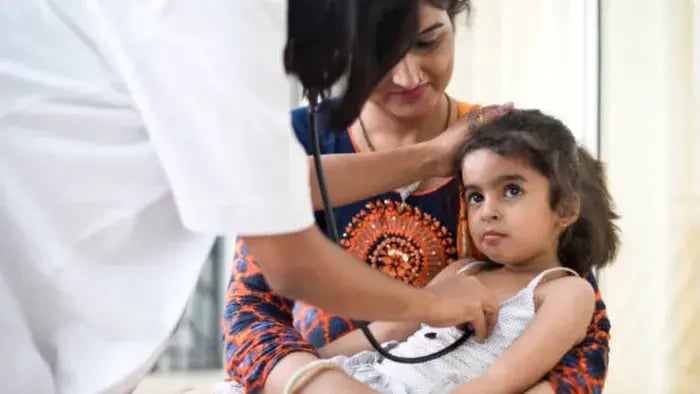- Long-Term Protection Through Vaccination (Active Immunity)
- Quick Shield Through Antibody Support (Passive Immunity)
- Faster Response to Common Illnesses
- Stops the Spread of Infections in Groups
- How Passive Immunity Protects You in Emergencies
Introduction
Teenagers are exposed to a wide range of bacteria, viruses, and allergens in school, on the sports field, or through everyday interactions. As their bodies grow and adapt, so does their immune system, and it learns to fight off threats more effectively. That’s where active and passive immunity come in, two ways the body defends itself against infections.

According to Treasure Island 2025, active immunity develops when the body’s immune system responds to pathogens. It usually happens when you get sick or through vaccinations. This process helps teens build long-term protection by “training” their body to recognise and fight specific invaders. For example, once a teen gets a vaccine for measles, the body remembers how to fight it if exposed again in the future.
As per a study published in Mucosal Immunology. 2015, passive immunity is temporary protection passed from another source. It can be passed from a mother to her baby through breast milk or via antibody-based medicines. While it doesn’t last as long as active immunity, it gives the body immediate protection during critical moments.
Knowing how both types of immunity work helps teens and parents make informed decisions about health, nutrition, and vaccinations. These systems don’t just keep teens safe – they help reduce the spread of illnesses in schools and communities. Building a strong immune foundation now means fewer sick days, better school performance, and overall well-being.
5 Ways Active and Passive Immunity Keep Teens Healthy

As a teen, your body is learning to defend itself against many types of infections. From school to sports to social life, you’re exposed to bacteria and viruses all the time. Luckily, your immune system is always working to keep you safe. Two types of protection are active immunity and passive immunity. While active immunity helps your body create long-term defenses after vaccines or infections, passive immunity gives you quick help from external sources like antibodies or breast milk. Together, these two forms of immunity are a powerful team that keeps you healthy, strong, and ready for whatever life throws your way.
Long-Term Protection Through Vaccination (Active Immunity)
When you get vaccinated, your body learns to recognize harmful viruses or bacteria. According to research conducted in New York in 2001, this builds active immunity, where your system creates memory cells that know how to respond quickly if you’re exposed again. That’s why vaccines like tetanus, hepatitis, and HPV are given during your teen years. They prepare your body to act fast, so you don’t get sick.
Quick Shield Through Antibody Support (Passive Immunity)
Passive immunity doesn’t require your immune system to do the heavy lifting. As per a study published in Philos Trans R Soc Lond B Biol Sci. 2015, ready-made antibodies are given to you through treatments like immunoglobulin shots or even from breast milk during infancy. For teens, antibody-based medications may be used when immediate protection is needed, such as during a hepatitis exposure or for certain travel vaccinations.
Faster Response to Common Illnesses
With active immunity, your body stores a 'memory' of past infections. So, if you contract the same virus again, such as the flu, your body can respond much faster and prevent it from worsening. This quicker response time means fewer school absences, more energy, and you’ll recover more quickly.
Stops the Spread of Infections in Groups
When you’re vaccinated or have strong immunity, you’re less likely to pass infections to others. This is especially important in school or sports environments where germs spread fast. Active immunity creates a shield not just for you but for your friends and family, too. This group effect is known as herd immunity, which protects people who may be more vulnerable.
How Passive Immunity Protects You in Emergencies
There are times when your immune system may not be ready to fight, such as after a significant exposure or during a weakened health phase. In such cases, passive immunity provides your body with instant tools to defend itself. For example, rabies immunoglobulin is administered after an animal bite to provide rapid protection before the vaccine takes effect. It’s a backup plan your body can rely on.
Conclusion

Active and passive immunity are crucial to maintaining the health of teens during their most formative years. Active immunity builds long-term defence through vaccines and past infections, while passive immunity gives you immediate support in the moment. Together, they create a balanced system that helps your body respond more quickly to illness, recover more effectively, and prevent the spread of infections to others.
Knowing how both types of immunity work will help you make better health choices, from staying up to date on vaccines to knowing when you need medical support. It’s all about giving your body the right tools to be strong and safe.
Her love for storytelling began with reading her grandfather’s speeches, where Tarishi saw the power of words in creating lasting memories. Combining her passions for food and writing, she has turned her life into a fulfilling path of sharing stories that celebrate flavours and how food brings communities together.
The views expressed are that of the expert alone.
The information provided in this content is for informational purposes only and should not be considered a substitute for professional medical advice, diagnosis, or treatment. Always seek the advice of your physician or another qualified healthcare provider before making any significant changes to your diet, exercise, or medication routines.
References
https://pmc.ncbi.nlm.nih.gov/articles/PMC7150278/
https://www.ncbi.nlm.nih.gov/books/NBK513280/
















